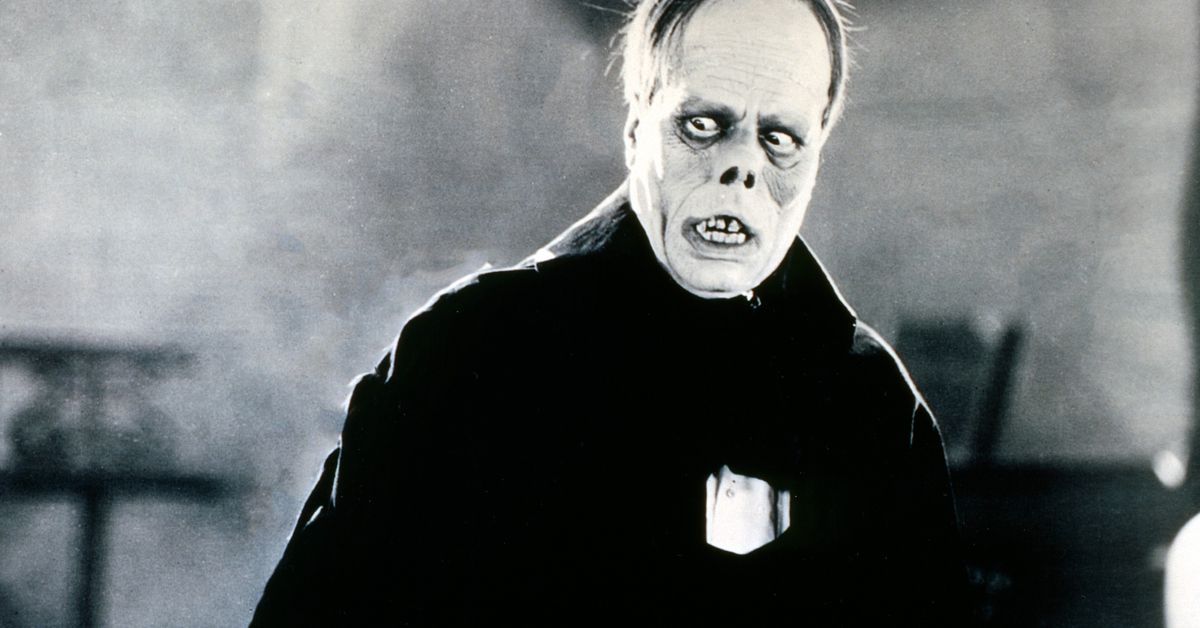There’s a Secret Reason Why Nicolas Cage’s Face Looks So Weird in Longlegs
The Strange Film by Oz Perkins Long legs does a lot of genre hopping: it’s part cop show, part serial killer thriller, part supernatural horror film, with lots of little detours into other subgenres. And it raises a lot of questions that it never answers. In particular, the killer — an isolated eccentric who calls himself “Longlegs” in cryptic messages he leaves for the police — has such an odd appearance that it begs the question of whether there’s a supernatural element to it, too.
Image: Neon
Longlegs’ look isn’t discussed in the film, except in a scene where a hardware store employee (played by Perkins’ daughter Bea) calls Longlegs a weirdo. People don’t even seem to acknowledge that he looks like someone slapped wet, greasy, white modeling clay all over his face and walked away. While the prosthetics job could be seen as a way to hide Nicolas Cage’s face for fear that the iconic actor was too well-known and his presence would be distracting, the press releases for the film have a different explanation that the film never even hints at.
(Editorial note: Major spoilers ahead Long legs.)
As viewers eventually learn, Longlegs, as he calls himself, is a Satanist who busies himself collecting souls for the devil by creating evil dolls and sending them to families under the guise of winning some sort of contest. Once the doll enters each household, the father of the family succumbs to some form of possession and murders everyone in the house, before committing suicide. When Longlegs is captured, he makes it clear to protagonist Lee Harker (Maika Monroe) that he expects Satan to reward him handsomely for his actions — he doesn’t fear his impending death, because (sort of like Obi-Wan Kenobi in Star Wars: A New Hope), he expects to be “everywhere” after his death.
This fervent devotion to Satan, it turns out, actually explains his pale, bumpy, plastic appearance. According to the film’s press notes, Longlegs’ face is the result of repeated botched plastic surgery:
When Perkins initially approached special makeup effects artist Harlow MacFarlane to create Longlegs’ face, MacFarlane says, “From the beginning, Oz always had that glam-rock vibe in mind.” The big hair, the flashy makeup, the superficial aesthetic fixation that might drive someone to go under the knife to stay young forever. But more than driven by style, Longlegs would be a man driven by obsessive devotion.
“His jam is basically him trying to make himself pretty for the Devil,” MacFarlane explains. “He’s in love with the Devil and he’s trying to impress the Devil, so he’s had all these plastic surgery jobs to make himself as pretty as he can for the Devil. Everything he does is for this evil force that he’s trying to impress.” (…)
Getting the faded, glam-sadistic look just right required researching the state of elective surgery in the late ’70s and early ’80s — with characters living in semi-rural Oregon, no less — and then building on a foundation of shoddy work, marked by overstuffing and visible scars. There would be layers upon layers of pain. “You can imagine it being a doctor’s botch job in a mall somewhere,” says MacFarlane, who worked closely with Perkins and Cage to perfect the final product.
According to the same notes, MacFarlane looked at Gary Oldman’s makeup as Mason Verger in the film Hannibal as a possible source of inspiration. In the 2001 sequel to The Silence of the LambsMason was a rapist and pedophile who was drugged and convinced by Hannibal Lecter to cut off his own face, resulting in massive disfigurement that could only be partially repaired through surgery.
Cage also proposed an approach similar to Lon Chaney’s makeup in 1925 ghost of the opera. Both inspirations were ultimately deemed overkill for Perkins’ film, but both can be found somewhat in the final product. A note at the end of that section also reveals something Cage hoped to see on screen but never did: he wanted Longlegs to “tear his nose completely off at some point during the movie.”

There is no mention in the film or in the press releases of what Satan thinks of Longlegs’ current face.
The notes also reveal an interesting tidbit: Perkins kept the character’s final appearance from Monroe until he filmed the scene where they first meet in an FBI interrogation room, because he wanted her nervous reaction to be authentic.
“So many people on horror sets wonder if it’s scary or creepy. And it’s really not! You see all the jokes. You see the fake blood,” Monroe says in the press release. “But for the first time, I was able to really experience this real feeling of being really uncomfortable and nervous and scared and afraid to open that door, of what I was going to see. (…) Oz didn’t show me any pictures or anything. I knew (Cage) was in the hair and makeup chair for hours, but I had no idea! It was a pretty surreal experience that I will absolutely never forget.”
